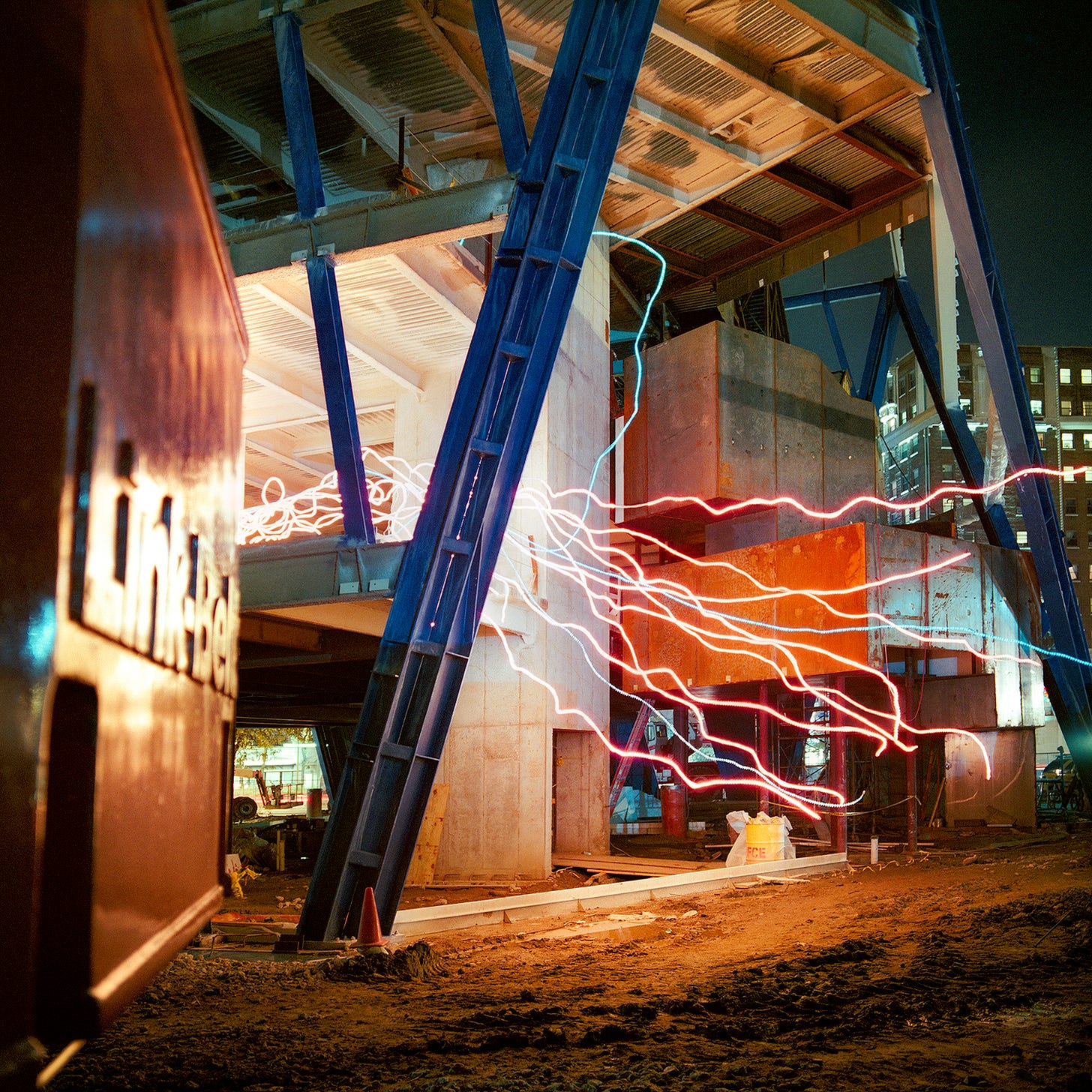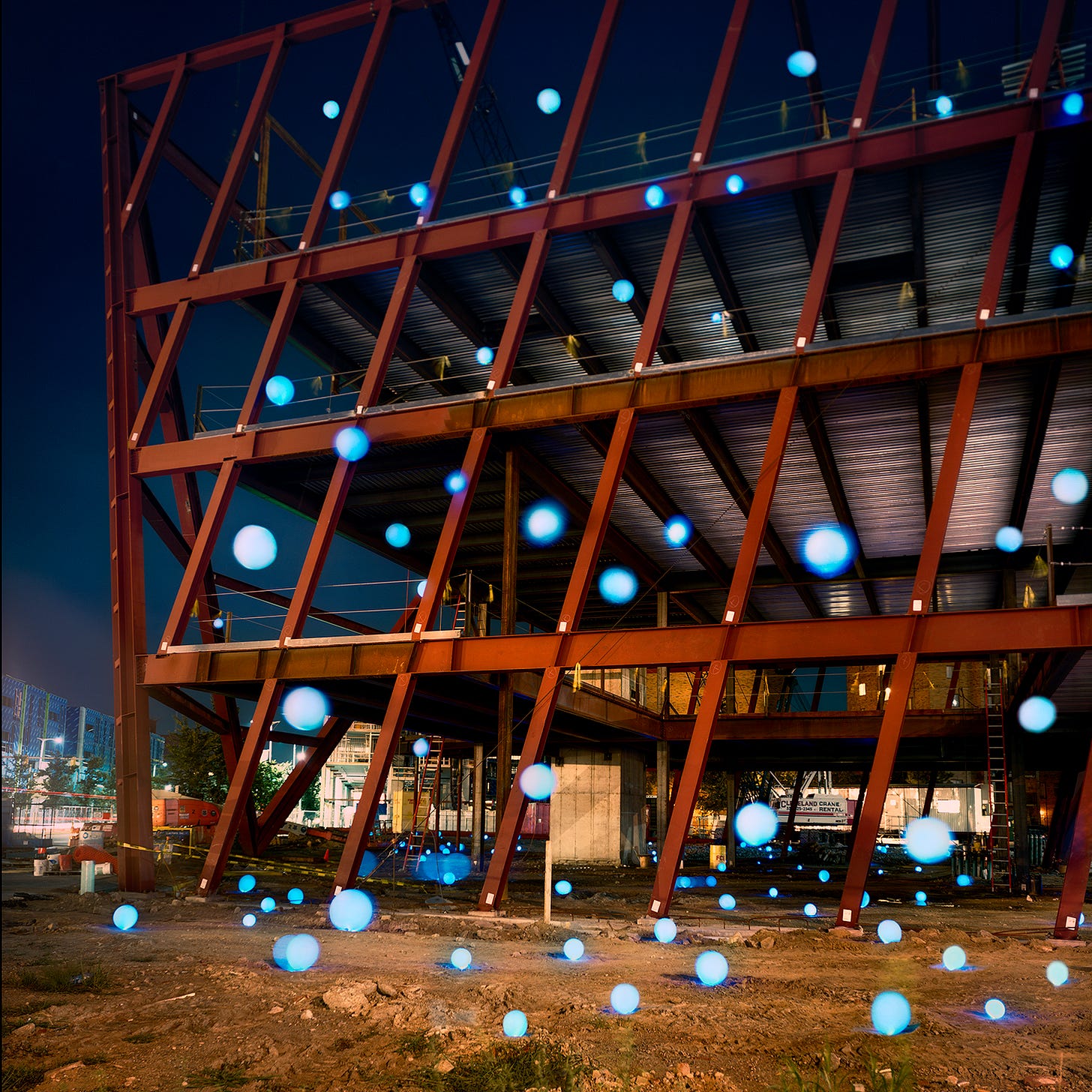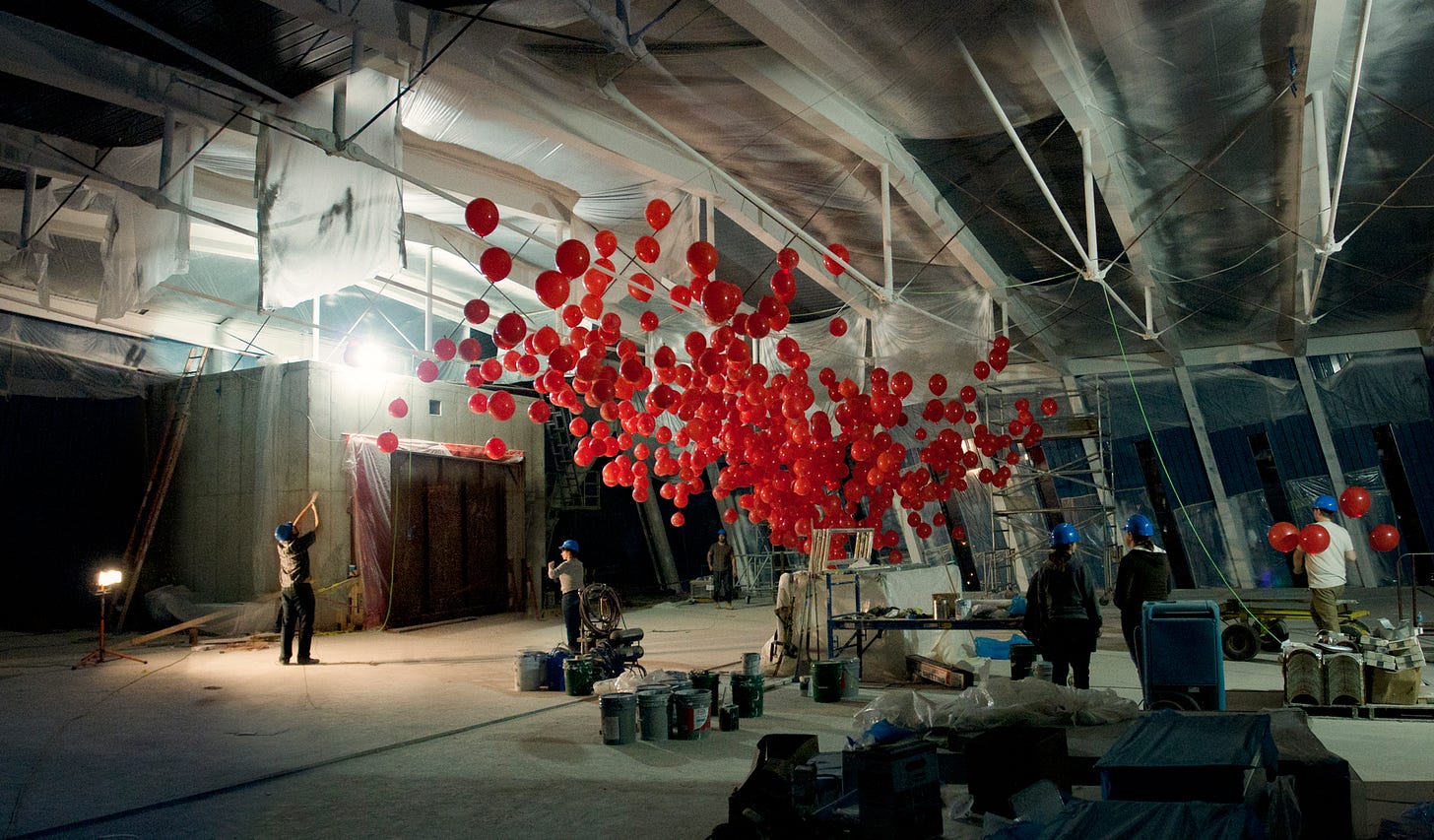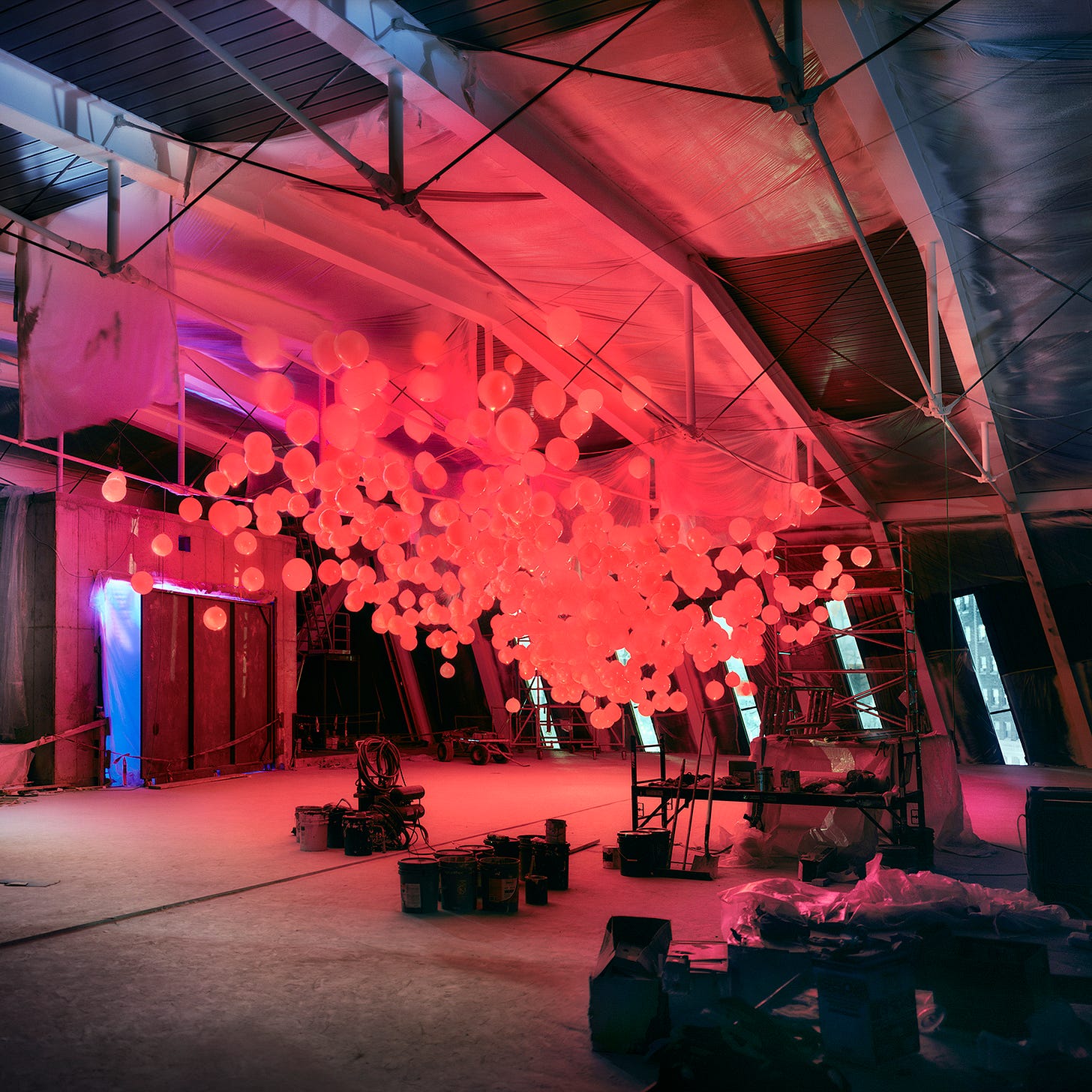Making Art in an Active Construction Site
In the spring of 2011, the Museum of Contemporary Art Cleveland (moCa) offered me the incredible opportunity to create several installations to photograph in their new building, located at the intersection of Euclid Avenue and Mayfield Road, in University Circle, during many different phases of the construction process. This was to be an ambitious year-long project, involving coordination between myself, a slew of assistants, the moCa staff, and the building’s construction workers and engineers. It’s still astounding to me that it was even possible to make artwork within an active construction site.
There were dozens of meetings just to begin the process of planning the installations I would build, in addition to digital fly throughs of the completed space and tours of the site. I would then give the moCa team a proposal of what I had in mind for a particular image, the materials that would be used, and how long it would take to install everything and then shoot. In a few instances, I would ask to work in a particular area of the building, but construction had already progressed enough that the space didn't look the same as how I had envisioned it for the shot, so I'd have to change course. The constant shifting sands of the location I was working in forced me to be extra malleable in amending how I had pre-envisioned each photographic image for each individual installation.
Conceptually, I wasn’t interpreting environmental concerns for this project, but rather focused on exploring the geometry of the space, creating strong compositions, and playing with the multitude of hard edges found within the architecture. It was such a unique opportunity to work within a 6000 square foot space that was still open to air, with no walls, surrounded by construction equipment, I-Beams, and rebar. I knew we’d only have one chance to get each shot I had in mind, so I did a lot of test shots beforehand to figure out the color temperature of the street lights and what my exposure would be since everything was photographed on film with 4x5, 8x10, and medium format cameras.
For installations made on the exterior of the building, I was thinking about scientific elements, like constellations, crystals, and charged particles. The first image in this newsletter was my interpretation of the Tesla coil. I created the illusion that the building was emitting strong currents of electric energy by running lines of 12 gauge anchor wire and teflon rope to support LED tube lights from the second floor, which would later become the museum’s wood shop and exhibition workshop. This installation required absolute precision from everyone involved as we had a very limited time frame to get the scene built and photographed within only a few hours.
The photographic image seen above is from the very first night of shooting in which hundreds of blue balloons filled with LED lights were laid across the construction rubble and suspended into the air along the sides of the building. moCa is down the street from Little Italy, where exuberant celebrations for the Feast of the Assumption were underway. Suffice it to say, my assistants and I provided curious entertainment for festival goers who crossed our path to and from the event.
The installations in the building’s interior spaces were more theatrical, with a collection of poetic gestures that served as ephemeral stages for a Shakespearean play. The image above shows a moment behind the scenes as a slice of my crew working to finesse a mass of red balloons into place. This night required the most amount of assistance, as there were just so many balloons to inflate and rig to the ceiling. We needed every reliable person to get in and get out before construction started up again early in the morning. Yes, “99 Luftballons” did come up. No, I was not in the mood for it. I was too focused on ensuring we hit our mark within the allocated time frame!
The shoot nights for this project were so stressful, but exceptionally fulfilling. Working in an active construction site meant we had to forgo the luxury of setting up at a more leisurely pace, while also being mindful of the various hazards around every corner. We donned hard hats and wore long sleeves, pants, and heavy boots even when it was 90 degrees to protect ourselves. We used flashlights to find our way around exposed rebar and worried about falling off the side of an unfinished building. We needed to be focused and hyper aware of our surroundings at all times.
It was a tremendous honor to create this series and be challenged in such unexpected ways. This project kept me on my toes and created a great deal of camaraderie between the various parties involved to make it happen. Each night, the air was full of energy and excitement as we worked to illustrate a building in flux, enlivened by our installations. As my dear longtime studio assistant, Lindsey Felice best put it: “When I think back to shoot nights, I think of beautifully controlled chaos, and it makes me want to do it all over again."
This project was a commission from the museum as part of their inaugural show in the new building, "Inside Out and From the Ground Up", curated by David Norr, and supported in part through a Rauschenberg Foundation Grant. Farshid Moussavi, of Foreign Office Architects (now Farshid Moussavi Architects), designed the angular building that has become emblematic of University Circle over the past decade. Donley’s Concrete Construction Company oversaw the construction and were very kind and open in trying to help my artistic visions come to life without interfering with their work.
I’ve added four photographs from this series to my web store as pigment prints available in two sizes, each in editions of 25 on archival museum quality paper. If you're a Clevelander who loves moCa, and you should, or if you just appreciate this more urban iteration of my work, this is your opportunity to add photographs from the series to your collection.
Thank you especially to everyone at moCa, Megan Lykins Reich, Rose Bouthillier, Kate Montlack, Jamie Hardis, Dan Reich, Lindsay Felice, Mike Helms, Mike Wallace, Karl Anderson, Scott Stibith, Nikki Woods, and Sarah Kabot. These photographs wouldn't exist without your dedicated help and support.
As always, I’m eternally grateful for everyone’s support of my artistic practice, whether that’s in the studio, at a cultural institution, or just reading these newsletters. Reflecting on this project has reminded me of how fortunate I’ve been to have such a wonderful network of friends and colleagues who have enthusiastically aided with each twist and turn of my career.
Wishing you all well.
- Barry






